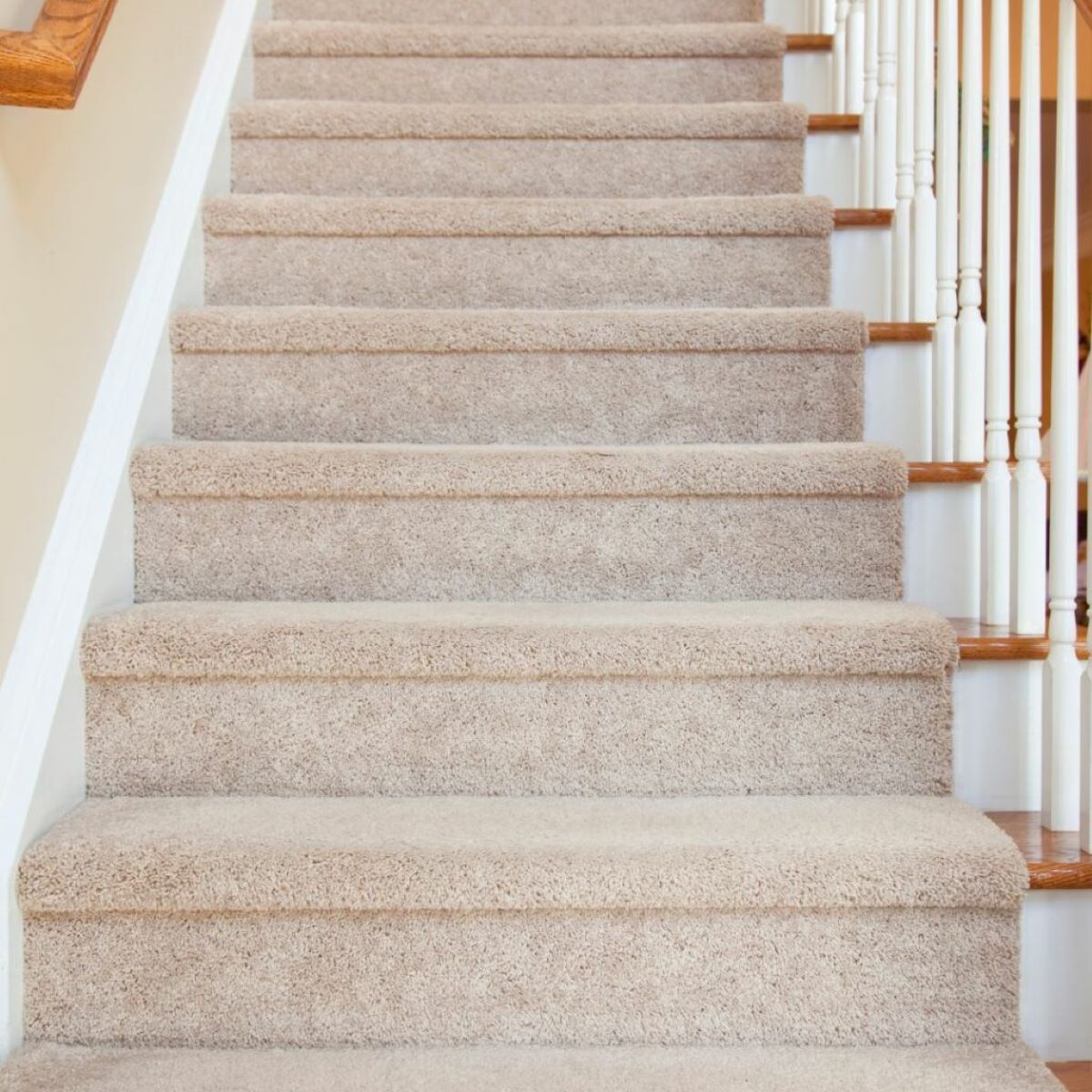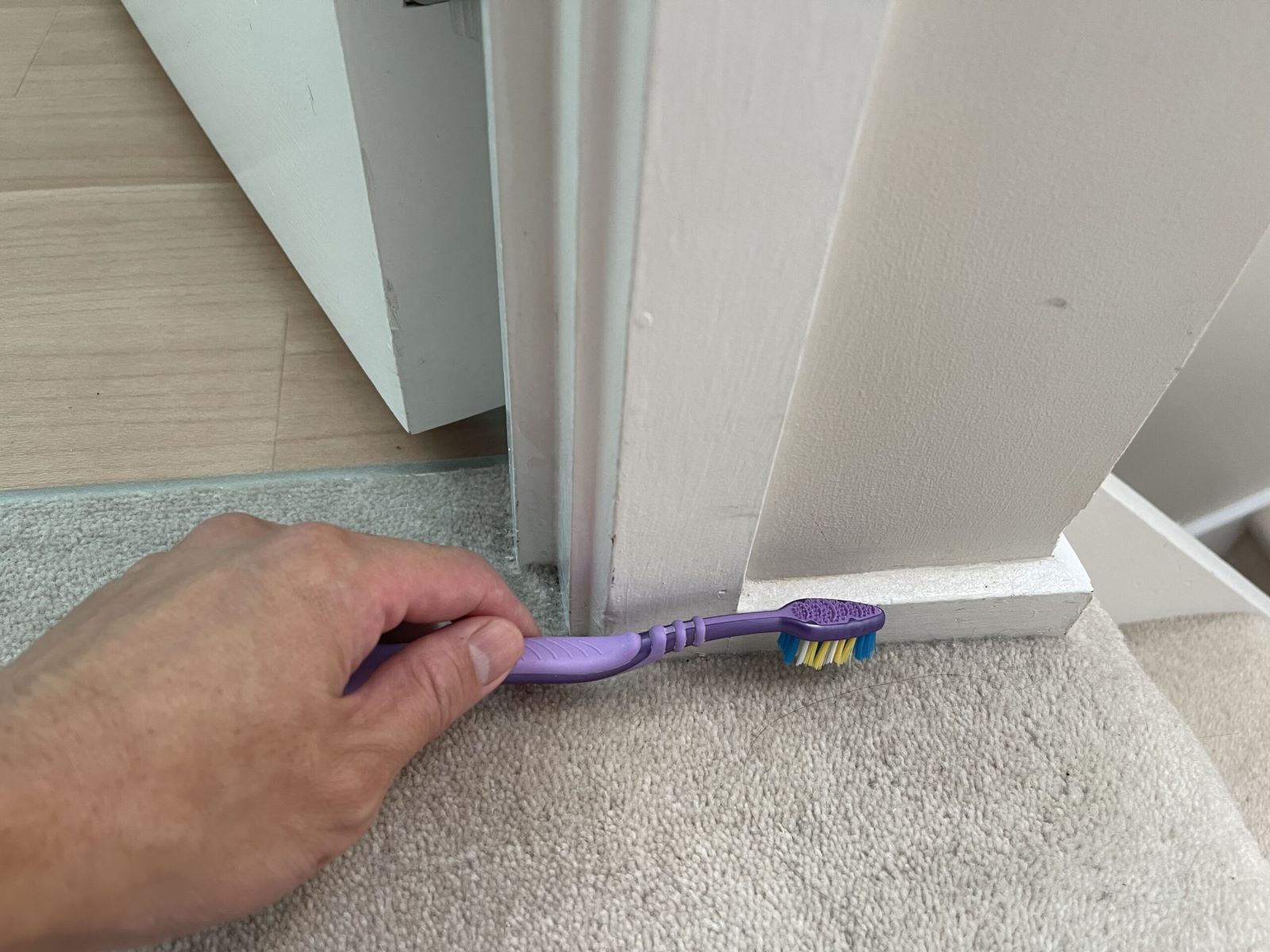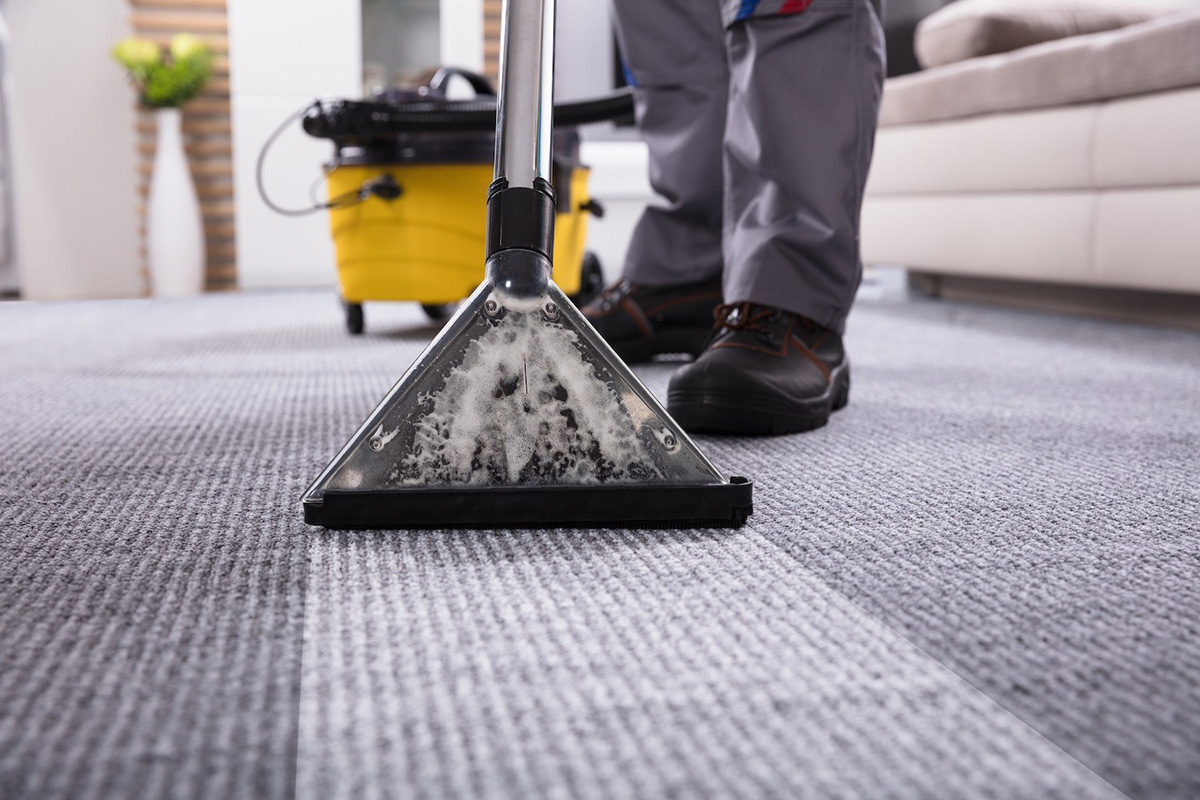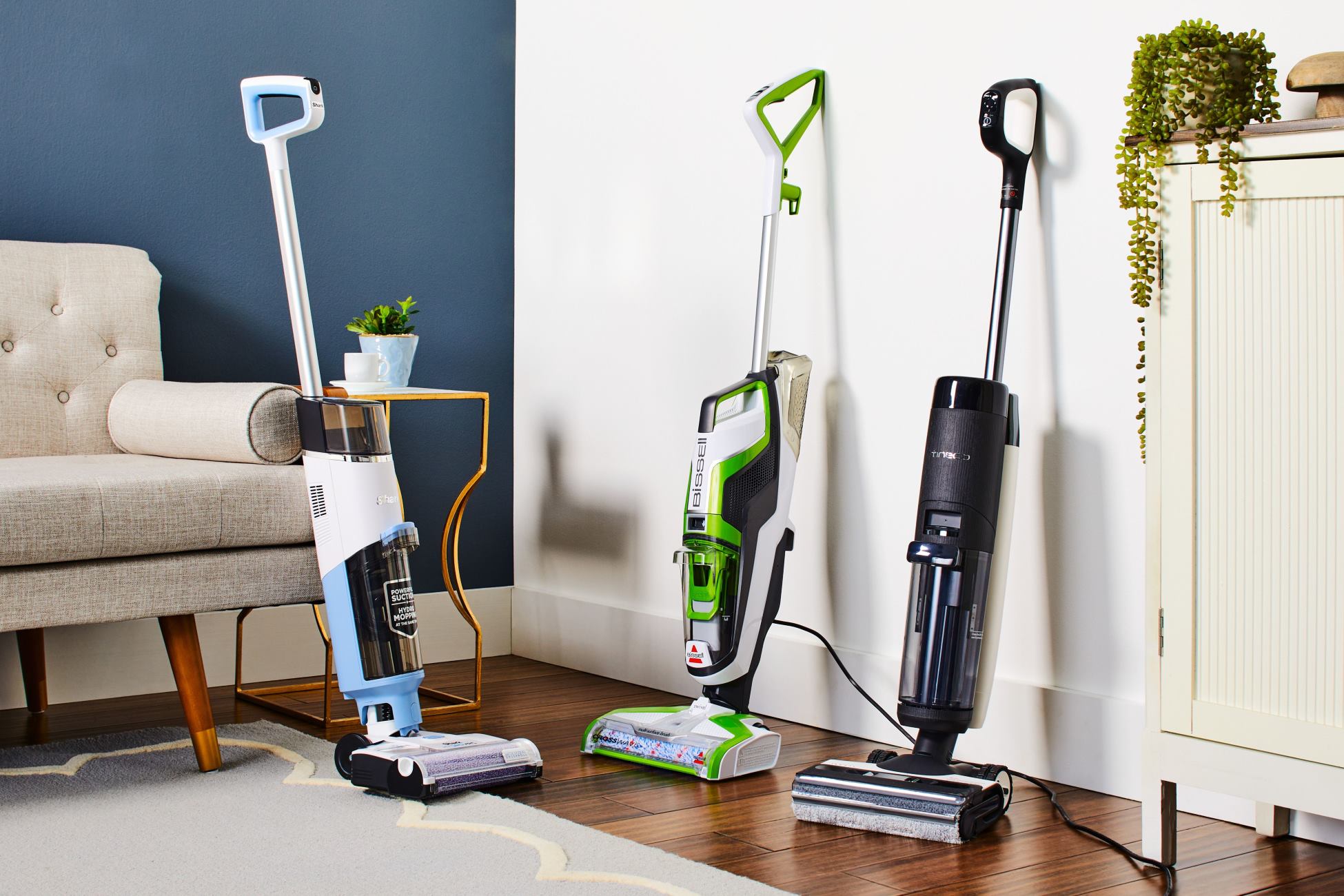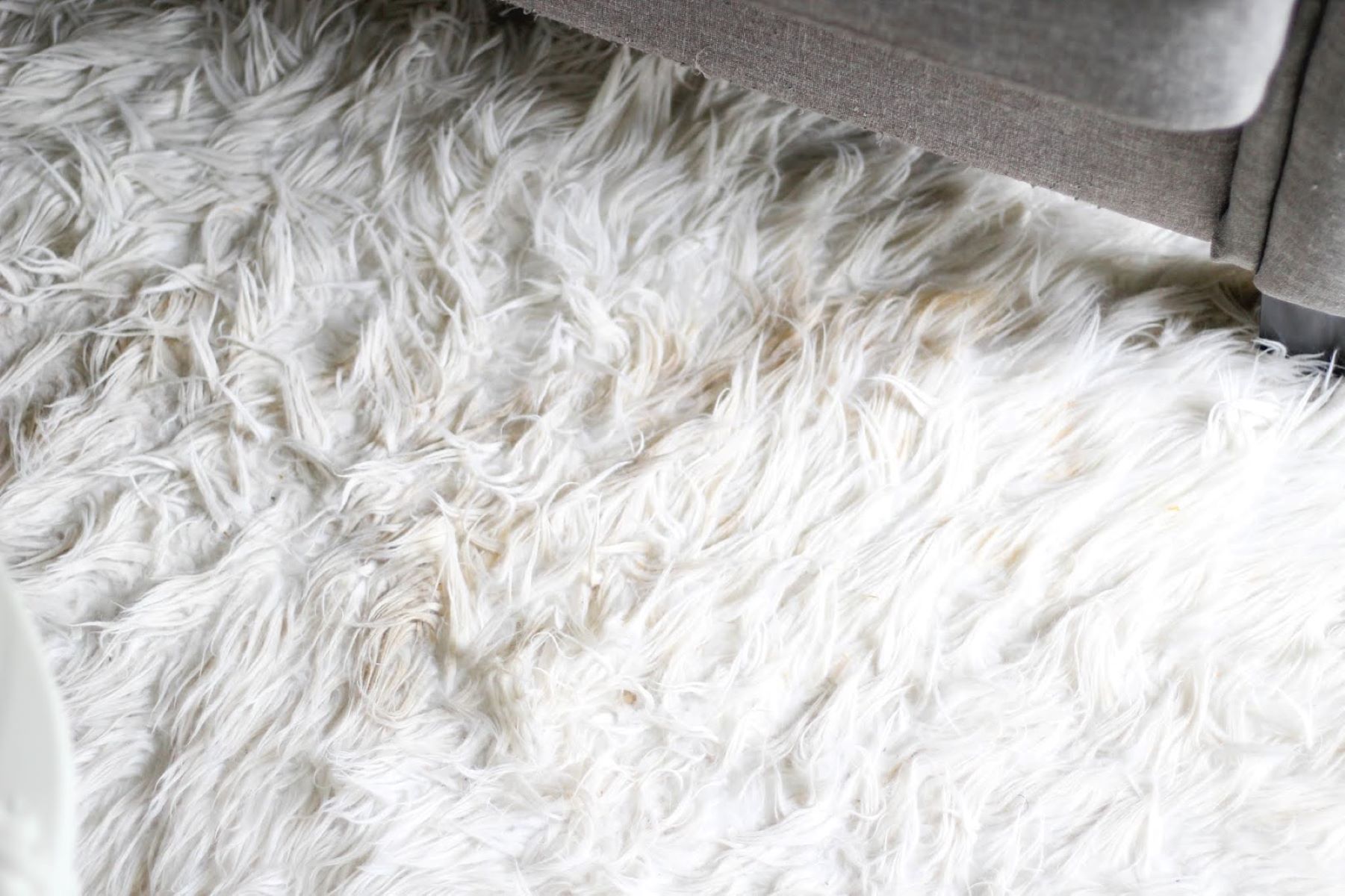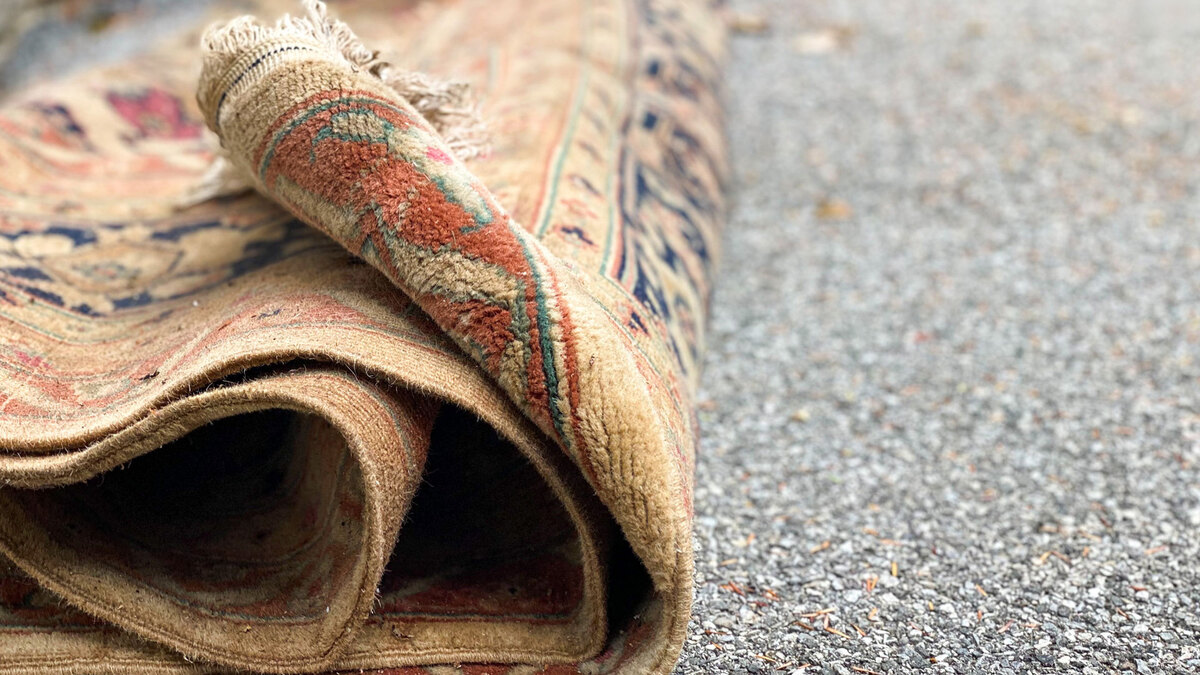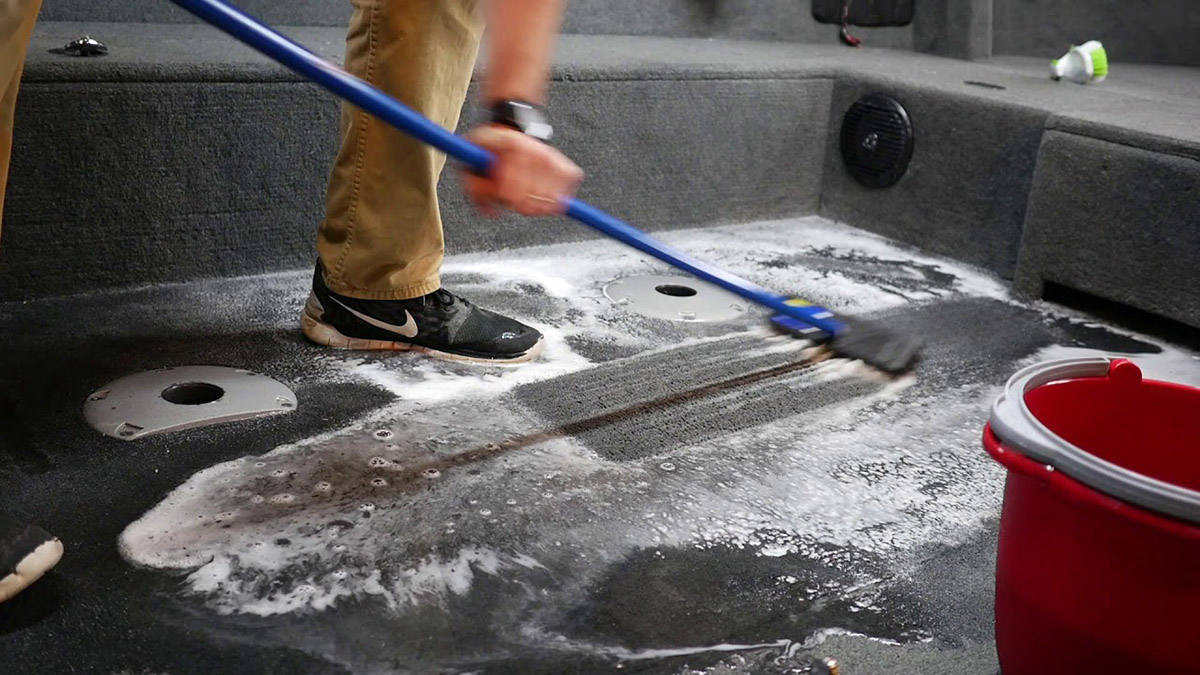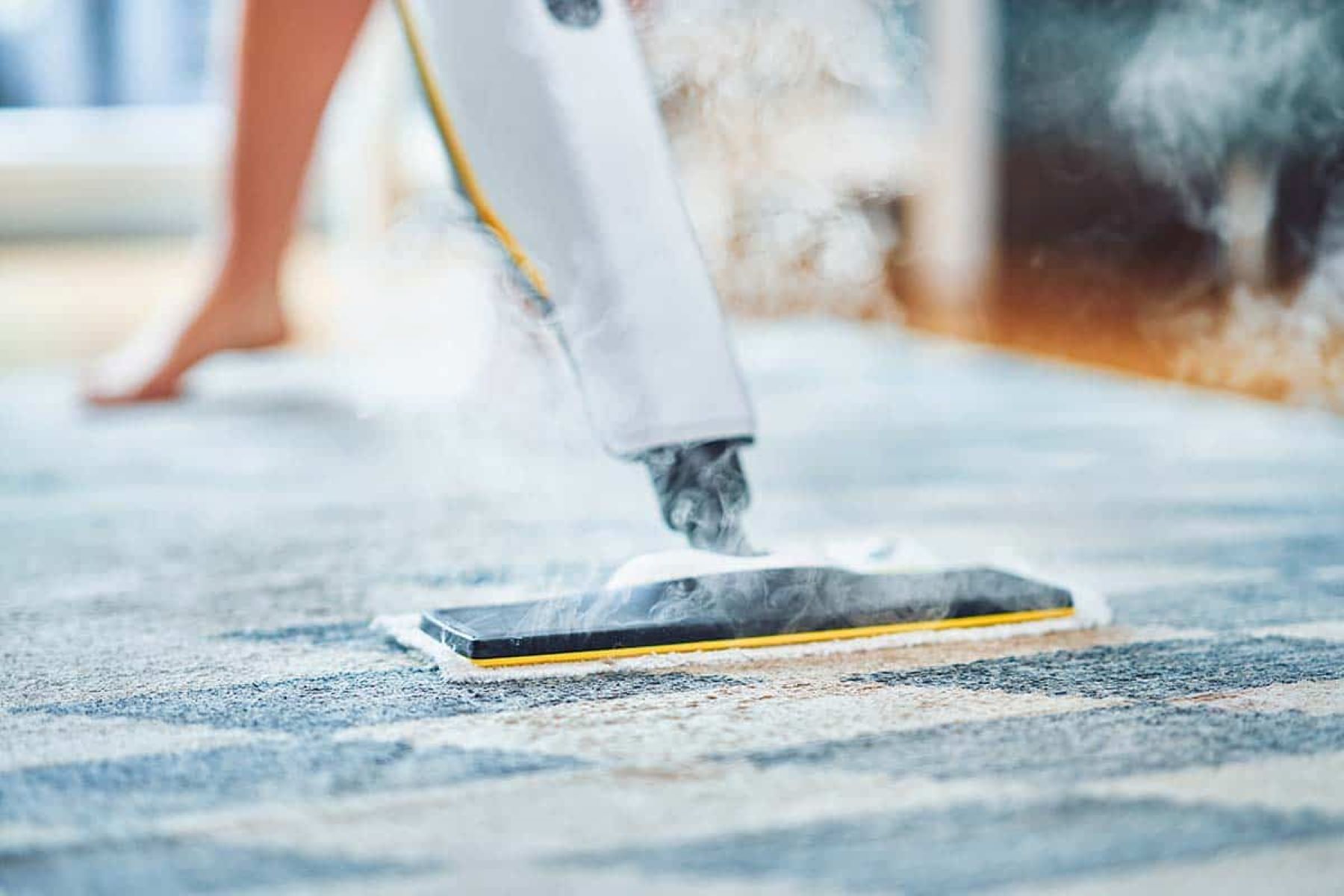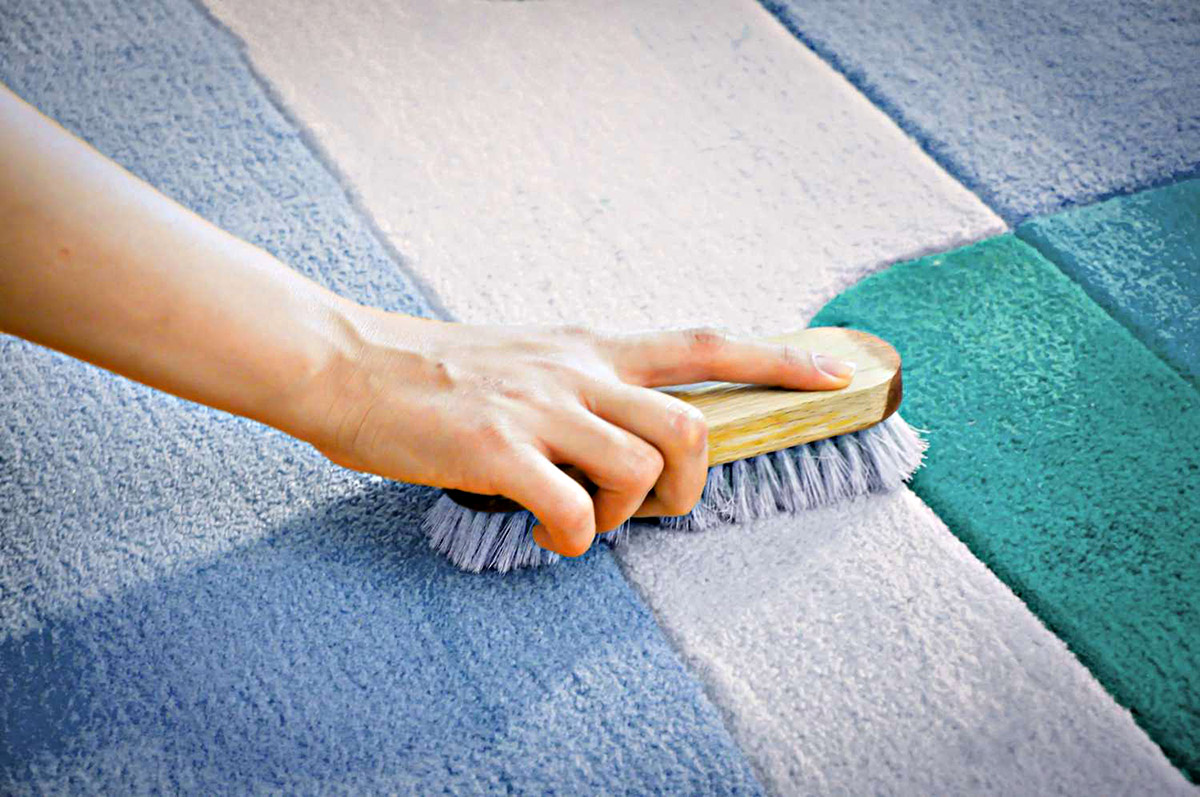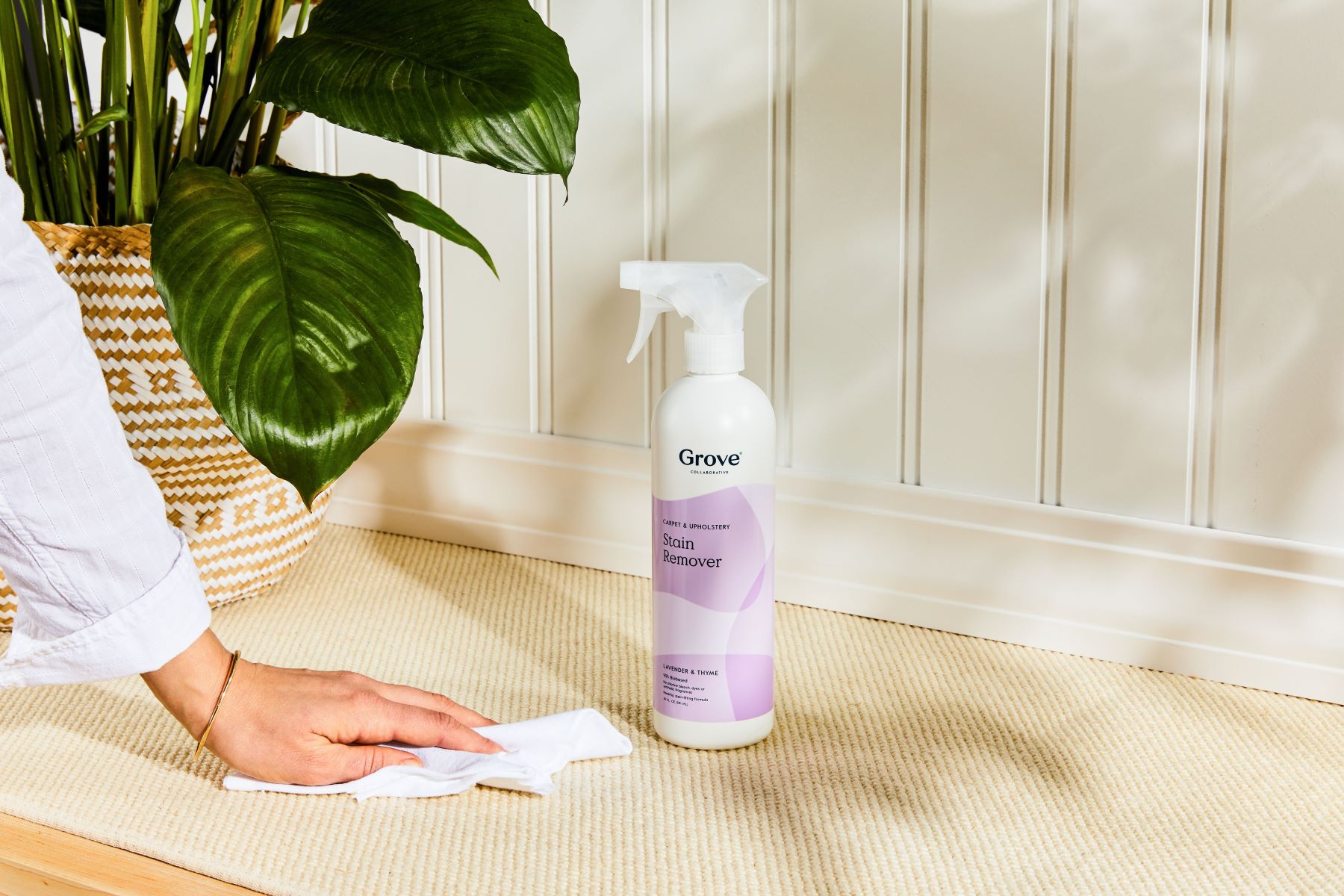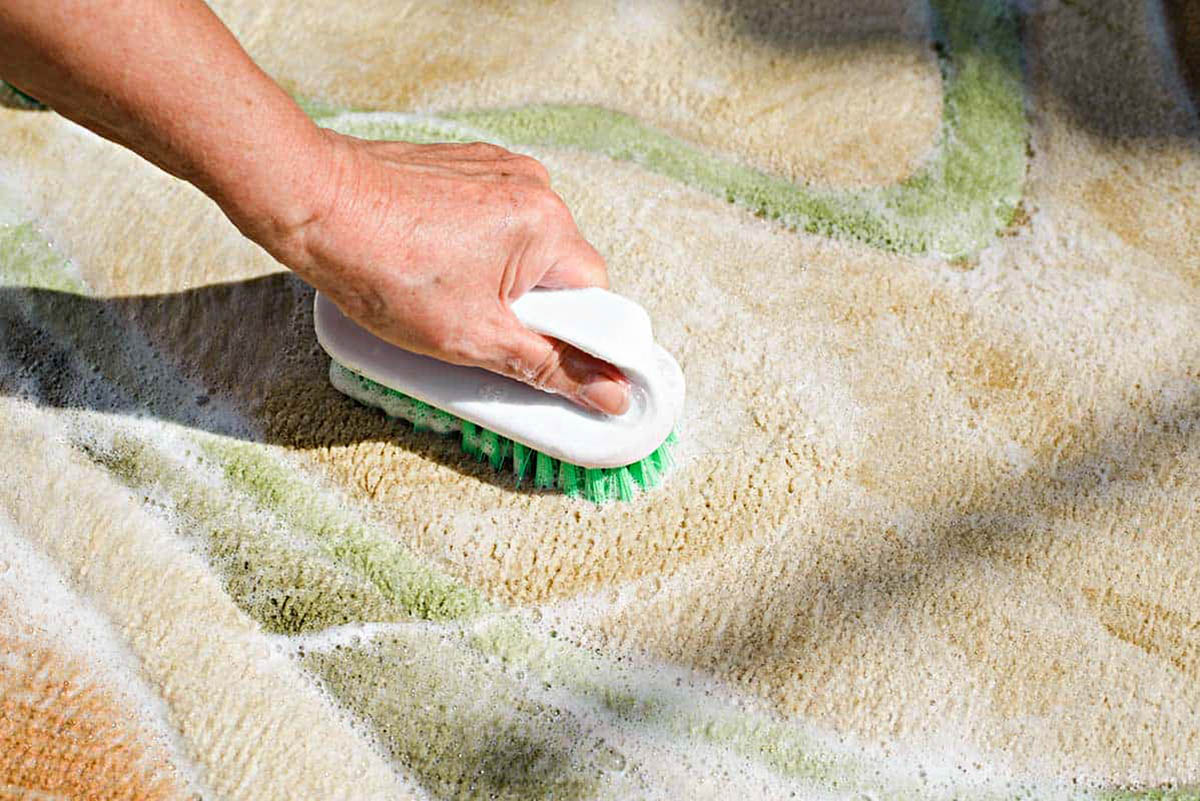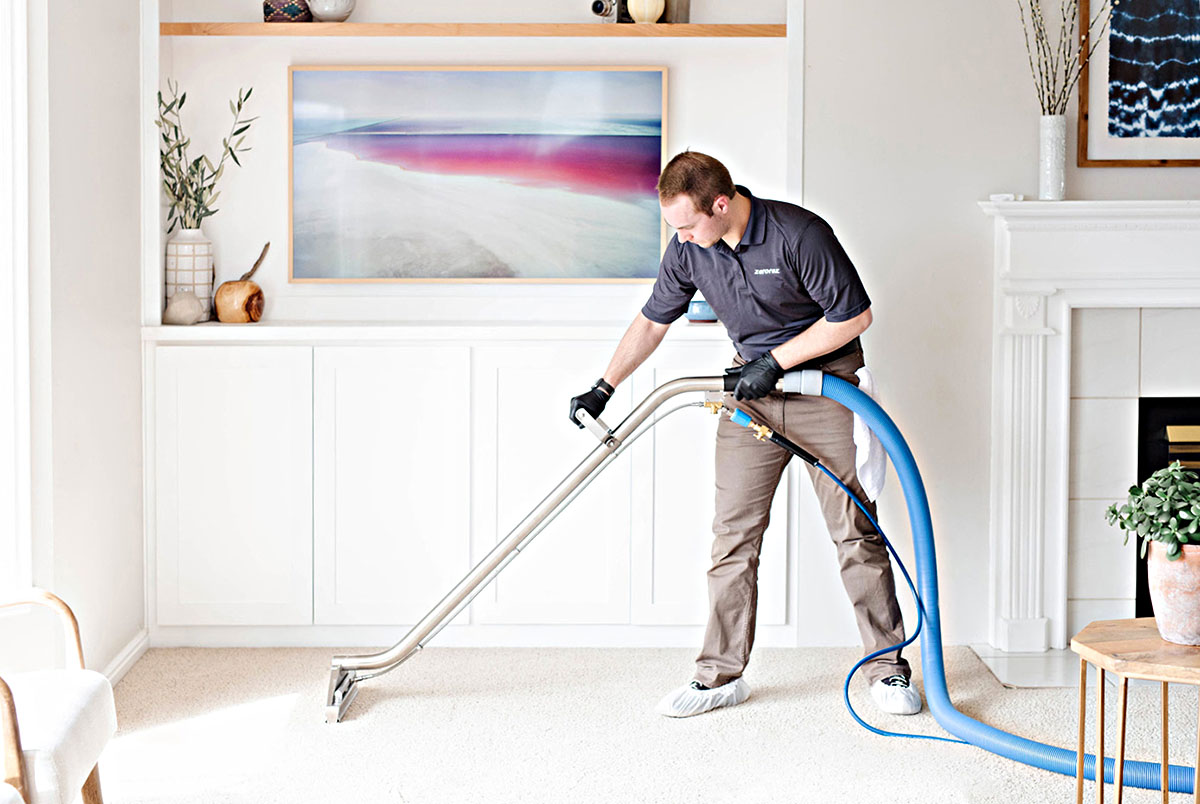

Articles
How To Prepare For Carpet Cleaning
Modified: September 1, 2024
Learn the best articles for preparing for carpet cleaning and ensure a successful and efficient cleaning process. Get expert tips and advice to make your carpets look fresh and clean.
(Many of the links in this article redirect to a specific reviewed product. Your purchase of these products through affiliate links helps to generate commission for Storables.com, at no extra cost. Learn more)
Introduction
Welcome to our comprehensive guide on how to prepare for carpet cleaning. Carpets are a popular choice for flooring in homes and offices due to their comfort and aesthetic appeal. However, over time, carpets can accumulate dirt, dust, stains, and odors, making them look dull and unclean. Professional carpet cleaning is essential to maintain the cleanliness, longevity, and overall appearance of your carpets.
Whether you’re planning to hire a professional carpet cleaning service or attempting a DIY cleaning project, proper preparation is key to achieving optimal results. In this article, we will walk you through the necessary steps to prepare your carpets for cleaning, from clearing the area to selecting the appropriate cleaning method for your carpet type.
By following these guidelines, you will be able to maximize the effectiveness of the carpet cleaning process and ensure that your carpets regain their original beauty. So, let’s dive in and learn how to prepare for carpet cleaning!
Key Takeaways:
- Proper preparation is essential for effective carpet cleaning, from clearing the area and removing debris to choosing the right cleaning method and solution. Each step contributes to achieving cleaner, healthier, and revitalized carpets.
- Whether DIY or professional service, thorough preparation ensures optimal results. Clearing the area, treating stains, and choosing the right cleaning method are key to achieving cleaner, fresher, and longer-lasting carpets.
Read more: How To Prepare For A Garden
Understanding the Importance of Carpet Cleaning
Carpet cleaning is not just about maintaining the appearance of your carpets; it is also crucial for improving indoor air quality and creating a hygienic living environment. Here are several reasons why carpet cleaning is important:
- Removal of Dirt and Dust: Carpets act as filters, trapping dirt, dust, allergens, and other particles that circulate in the air. Over time, these contaminants can accumulate in the carpet fibers and compromise indoor air quality. Regular cleaning removes these pollutants, making the air cleaner and healthier.
- Elimination of Allergens: Carpets can harbor allergens such as pollen, pet dander, and dust mites. These allergens can cause respiratory problems and allergic reactions, particularly for individuals with asthma or allergies. Thorough carpet cleaning helps to reduce allergen levels, providing relief for allergy sufferers.
- Prevention of Mold and Mildew: Moisture can get trapped in carpets, creating the perfect breeding ground for mold and mildew. These fungi not only cause unpleasant odors, but they can also pose health risks. Regular carpet cleaning removes moisture and prevents the growth of mold and mildew.
- Prolonging Carpet Lifespan: Carpets are an investment, and regular cleaning helps to protect that investment. Dirt and debris are abrasive and can wear down carpet fibers over time. By removing these particles, you can extend the lifespan of your carpets and save money in the long run.
- Improvement of Appearance: Clean carpets enhance the overall appearance of your space. With regular cleaning, carpets can regain their vibrancy, softness, and texture. This can instantly freshen up your home or office and create a welcoming environment.
Now that you understand the importance of carpet cleaning, it’s time to get your carpets ready for the cleaning process. In the next sections, we will guide you through the necessary steps to prepare your carpets and ensure a successful cleaning outcome.
Clearing the Area
Before you begin carpet cleaning, it’s essential to clear the area of any obstacles and belongings. This step is crucial as it not only allows for easier access to your carpets but also protects your furniture and other items from potential damage. Here’s what you need to do:
- Remove Furniture: Start by removing all furniture and accessories from the carpeted area. This includes chairs, tables, lamps, and any other movable items. Take care to lift the furniture rather than dragging it across the carpet, as dragging can cause rips or tears.
- Secure Valuables: If there are any fragile or valuable items in the room, make sure to secure them in a safe place. This can include delicate vases, artwork, electronics, or any other items that could potentially get damaged during the cleaning process.
- Clear the Floor: Remove any loose items or debris from the floor surface, such as toys, shoes, or clothing. These objects can interfere with the cleaning process or get tangled in the cleaning equipment, so it’s best to clear them away beforehand.
- Protect Baseboards and Walls: Take the time to protect your baseboards and walls by applying painter’s tape or using corner guards. This will prevent any accidental damage or marks during the carpet cleaning process.
- Notify Occupants: If you are cleaning a shared living space or office, inform other occupants about the cleaning process and ask them to avoid walking on the carpeted area until it is fully dry. This will ensure the best results and prevent any accidents.
By clearing the area before carpet cleaning, you create a safe and unobstructed space for the cleaning process. This step sets the foundation for a thorough and efficient cleaning job, ultimately leading to cleaner and revitalized carpets.
Removing Loose Debris
Before you begin the actual cleaning process, it’s important to remove any loose debris from your carpets. This includes dirt, dust, pet hair, and other particles that have settled on the surface. Here are some steps to effectively remove loose debris:
- Vacuuming: Start by thoroughly vacuuming the entire carpeted area. Use a vacuum cleaner with a powerful suction and a brush attachment that is appropriate for your carpet type. Vacuum in different directions to ensure that you capture all the loose debris. Pay extra attention to high-traffic areas and corners.
- Use a Broom or Brush: In cases where vacuuming alone is not sufficient, you can use a broom or brush to loosen and remove embedded debris. Gently sweep the carpet in one direction, using long strokes to dislodge any dirt or particles. Once loosened, use the vacuum cleaner to remove the debris from the carpet.
- Shake or Beat Rugs: If you have small rugs or mats that are easy to handle, take them outdoors and give them a good shake or beat them with a broom or rug beater. This will release any trapped dirt or debris that may have accumulated over time.
- Spot Cleaning: Take this opportunity to spot clean any visible stains or spills on your carpets. Use a carpet stain remover suitable for your carpet type and carefully follow the instructions. Blot the stain gently, rather than rubbing, to avoid spreading it further.
- Consider Professional Carpet Cleaning: In some cases, especially with heavily soiled carpets or if you’re unable to remove all the loose debris yourself, it may be best to hire a professional carpet cleaning service. They have the expertise and specialized equipment to deeply clean and restore your carpets to their original condition.
By taking the time to remove loose debris before starting the cleaning process, you ensure that the dirt and particles aren’t pushed deeper into the carpet fibers during the subsequent cleaning steps. This prepares your carpets for a more effective and thorough cleaning, ultimately yielding better results.
Treating Stains and Spots
Stains and spots on carpets can be frustrating and unsightly. Before proceeding with the overall carpet cleaning, it’s important to treat any visible stains and spots individually. Here’s how you can effectively treat stains and spots on your carpet:
- Identify the Stain: Take a close look at the stain to determine its nature. Is it a food stain, oil-based stain, pet stain, or something else? Different types of stains may require different treatment methods.
- Act Quickly: The key to effectively treating stains is to act promptly. The longer a stain sits on the carpet, the harder it is to remove. As soon as you spot a stain, blot it gently with a clean cloth or paper towel to absorb any excess liquid.
- Use Homemade Solutions: For common household stains, you can try using homemade solutions. For example, a mixture of water and mild dish soap can be effective for many types of stains. Alternatively, a solution of equal parts white vinegar and water can also be used for various stains.
- Test on a Hidden Area: Before applying any cleaning solution or product to the stained area, it’s important to test it on a small, inconspicuous area of the carpet. This helps ensure that the cleaning agent doesn’t cause any discoloration or damage to the carpet fibers.
- Follow Product Instructions: If you prefer to use commercial carpet stain removers, make sure to read and follow the instructions carefully. Different products may have different application methods, so it’s important to use them correctly to achieve the desired results.
- Blot, Don’t Rub: When treating stains, always remember to blot the affected area rather than vigorously rubbing it. Rubbing can push the stain deeper into the carpet fibers and potentially damage the carpet. Use a clean cloth or sponge and work from the outside of the stain towards the center to avoid spreading it further.
- Repeat if Necessary: Some stains may require multiple treatments to fully remove. If the stain remains after the initial treatment, repeat the process until the stain is no longer visible. Be patient and persistent, but avoid over-saturating the carpet with excessive cleaning products.
- Consider Professional Help: For stubborn or persistent stains that you’re unable to remove yourself, it’s advisable to seek professional help. Professional carpet cleaners have access to specialized stain removal techniques and products that can effectively tackle even the most stubborn stains.
By treating stains and spots before the overall carpet cleaning, you increase the chances of successfully removing them and restoring the appearance of your carpet. It’s important to remember that different stains require different treatments, so it’s essential to identify the stain correctly and use the appropriate cleaning method for the best results.
Read more: How To Clean A Sisal Carpet
Choosing the Right Cleaning Method
When it comes to cleaning your carpets, it’s essential to choose the right cleaning method based on your carpet type, level of soiling, and personal preference. There are several common carpet cleaning methods to consider:
- Hot Water Extraction: Also known as steam cleaning, hot water extraction is a popular method for deep cleaning carpets. It involves injecting hot water and a cleaning solution into the carpet and then extracting the dirty water using a powerful vacuum. This method is effective in removing deep-seated dirt, stains, and allergens but may require longer drying times.
- Dry Cleaning: Dry cleaning methods use specialized cleaning agents or powders that are applied to the carpet and then mechanically agitated. The dirt and cleaning agent are then extracted using a vacuum cleaner. Dry cleaning is a faster method that doesn’t require as much drying time as hot water extraction, making it suitable for certain carpet types and situations.
- Bonnet Cleaning: Bonnet cleaning involves using a rotary floor machine with a bonnet pad soaked in a cleaning solution. The machine then agitates the carpet’s surface to absorb and lift dirt. While bonnet cleaning can provide a quick surface clean, it may not be as effective in deep-cleaning heavily soiled carpets.
- Encapsulation Cleaning: Encapsulation cleaning is a low-moisture method that involves applying a specialized encapsulation cleaning solution to the carpet. The solution crystallizes around the dirt particles, which can then be easily vacuumed away. This method is popular for commercial settings with high-traffic areas.
- DIY vs. Professional Cleaning: It’s important to consider whether you want to tackle the carpet cleaning task yourself or hire a professional cleaning service. DIY methods can be cost-effective but may not provide the same level of deep cleaning and expertise as professional services. Professionals have the right equipment, knowledge, and experience to handle even the toughest carpet cleaning challenges.
Consider the specific needs of your carpets and the level of cleaning required to choose the most appropriate cleaning method. If you’re unsure, consult with a professional carpet cleaner who can assess your carpets and suggest the best cleaning approach.
Remember, different carpet types and manufacturers may have specific cleaning recommendations or restrictions. Always refer to the manufacturer’s instructions or consult with a professional to ensure that you choose the safest and most effective cleaning method for your carpets.
Vacuum your carpet thoroughly before the cleaning appointment to remove loose dirt and debris. This will help the cleaning process be more effective.
Preparing the Carpet Cleaning Solution
When it comes to carpet cleaning, using the right cleaning solution is vital for achieving effective and safe results. The cleaning solution helps to break down stains, remove dirt, and freshen up your carpets. Here’s how you can prepare a carpet cleaning solution:
- Read the Manufacturer’s Instructions: Before making a homemade cleaning solution or using a commercial carpet cleaning product, it’s important to read and follow the manufacturer’s instructions. This ensures that you’re using the cleaning solution correctly and in a manner that is safe for your specific carpet type.
- Homemade Cleaning Solutions: If you prefer to make your own cleaning solution, there are several ingredients you can use. For general carpet cleaning, a mixture of warm water and mild dish soap can be effective. You can also add a small amount of white vinegar to help remove odors. For specific stains, different solutions may be necessary. For example, club soda can be used for treating red wine stains, while a paste of baking soda and water can help remove pet stains and odors.
- Commercial Carpet Cleaning Products: If you choose to use a commercial carpet cleaning product, make sure it is suitable for your carpet type and the specific stains or dirt you’re dealing with. Always follow the instructions on the product label and use the recommended dilution ratios. Some products may require mixing with water, while others may come in a ready-to-use form.
- Spot Testing: Before applying any cleaning solution to your carpet, especially for homemade solutions or new commercial products, it’s important to spot test it on a small, inconspicuous area first. This ensures that the solution doesn’t cause any discoloration or damage to your carpet fibers.
- Pet-Friendly Solutions: If you have pets in your home, consider using pet-friendly cleaning solutions. Some commercial products are specifically formulated to remove pet stains and odors without the use of harsh chemicals that may be harmful to your furry friends. Alternatively, you can opt for natural solutions that are safe for pets, such as a vinegar and water mixture.
When preparing your carpet cleaning solution, remember that less is often more. Avoid using excessive amounts of cleaning solution, as this can leave behind residue and potentially damage your carpets. It’s always better to start with a milder solution and gradually increase the concentration if necessary.
By preparing the right carpet cleaning solution, you ensure that the cleaning process is effective in tackling stains, dirt, and odors, while also being safe for your carpet fibers and your living environment.
Testing the Carpet for Colorfastness
Before you proceed with any carpet cleaning method or solution, it’s crucial to test the carpet for colorfastness. Colorfastness refers to the ability of the carpet fibers to retain their color without fading or bleeding when exposed to cleaning agents. Testing for colorfastness helps ensure that the cleaning process won’t cause any discoloration or damage to your carpet. Here’s how you can conduct a colorfastness test:
- Select an Inconspicuous Area: Choose a small, hidden area of the carpet, such as a corner or an area behind furniture, where any potential color changes won’t be noticeable. This ensures that the test won’t affect the overall appearance of the carpet.
- Prepare the Testing Solution: Mix a small amount of the cleaning solution or carpet cleaner that you intend to use with water according to the recommended dilution ratio. If you’re using a homemade solution, prepare it as directed. Make sure the solution is well-mixed and uniform in appearance.
- Apply the Test Solution: Using a clean cloth or sponge, apply a small amount of the testing solution to the selected area of the carpet. Gently blot or rub the solution into the fibers, ensuring it is well-distributed. Avoid over-saturating or excessive scrubbing, as this could cause unintentional damage to the carpet.
- Observe for Color Changes: Allow the test solution to sit on the carpet for a few minutes, following the recommended time mentioned on the cleaning product label or instructions. Then take a clean, white cloth and blot the area to remove the excess solution. Inspect the spot for any color changes, such as fading, bleeding, or discoloration.
- Check the Cloth: After blotting, examine the cloth used to remove the test solution. If you see any transfer of color from the carpet to the cloth, this indicates that the carpet is not colorfast. In such cases, it’s best to avoid using that particular cleaning solution or method and consult a professional carpet cleaner to avoid potential damage.
If the test spot shows no signs of color changes or bleeding, it is likely that your carpet is colorfast, and you can proceed with confidence to clean the rest of the carpet using the selected method. However, if there are any concerns or doubts about the colorfastness of your carpet, it’s prudent to seek professional advice or assistance.
Testing the carpet for colorfastness is a simple yet crucial step in the carpet cleaning process. By taking this precautionary measure, you can ensure that the cleaning method and solution you use won’t cause any unwanted discoloration or damage to your carpets.
Vacuuming the Carpet Before Cleaning
Before you begin the actual carpet cleaning process, it’s important to thoroughly vacuum your carpets. Vacuuming serves as a crucial preparatory step that helps remove loose dirt, dust, and debris from the carpet fibers. Here are some key points to keep in mind when vacuuming your carpets:
- Choose the Right Vacuum Cleaner: Select a vacuum cleaner that is suitable for your carpet type and has adequate suction power. Ensure that the vacuum cleaner is in good working condition, with clean filters and a well-maintained brush or beater bar.
- Clear the Area: Before vacuuming, it’s important to clear the area of any objects or obstacles. Remove small furniture, toys, and other items that may hinder the movement of the vacuum cleaner or get tangled in the brush or beater bar.
- Prep High-Traffic Areas: Pay special attention to high-traffic areas, such as hallways, entryways, and living spaces. These areas tend to accumulate more dirt and debris, so it’s important to give them extra vacuuming attention.
- Use Proper Technique: When vacuuming, use slow and steady motions, making overlapping passes over the carpet. This ensures that you thoroughly clean each section and remove as much dirt as possible. Vacuum both lengthwise and crosswise to ensure comprehensive cleaning.
- Focus on Edges and Corners: Don’t forget to vacuum along the edges and corners of the room where dirt and dust tend to accumulate. Utilize the crevice tool or extension wand to effectively clean these hard-to-reach areas.
- Consider Multiple Passes: For heavily soiled areas or carpets with long fibers, it may be necessary to make multiple passes with the vacuum cleaner. This allows the vacuum to effectively lift and remove embedded dirt and debris, leaving your carpets cleaner and fresher.
- Pay Attention to Baseboards: While vacuuming, take a moment to vacuum the baseboards and floor moldings as well. These areas can collect dust and dirt, and vacuuming them ensures a more thorough cleaning of your space.
- Empty or Replace the Vacuum Bag: Regularly empty or replace the vacuum bag (or empty the dustbin for bagless vacuums) to maintain optimal suction power. A full bag restricts airflow and reduces the vacuum’s efficiency in picking up dirt and debris.
Vacuuming your carpets before the cleaning process not only removes surface-level dirt but also allows the cleaning solution to penetrate deeper into the carpet fibers, maximizing the effectiveness of the cleaning process. Additionally, it helps prolong the life of your vacuum cleaner by preventing clogs and ensuring optimal performance.
Investing time in thorough vacuuming ultimately enhances the overall cleanliness and appearance of your carpets, setting the stage for a more successful and effective carpet cleaning session.
Read more: How To Clean A Carpet Rug
Pre-Treating High-Traffic Areas
High-traffic areas in your home or office, such as hallways, entryways, and living spaces, tend to accumulate more dirt, stains, and wear and tear compared to other parts of the carpet. As part of your carpet cleaning preparation, it’s important to give extra attention to these high-traffic areas by pre-treating them. Here’s how you can effectively pre-treat high-traffic areas:
- Assess the Condition: Begin by assessing the condition of the high-traffic areas. Look for areas with visible stains, heavy dirt buildup, or signs of wear. Identifying the problem areas will help you focus your efforts on treating and cleaning these specific spots.
- Remove Loose Debris: Before pre-treating, remove any loose debris or dirt from the high-traffic areas by vacuuming or using a broom. This step helps prevent further spreading of dirt and facilitates better penetration of the pre-treatment solution.
- Choose the Right Pre-Treatment Method: Depending on the nature and severity of the stains and dirt, you can choose from various pre-treatment methods. For general dirt and grime, a pre-treatment solution consisting of warm water and mild dish soap can be effective. For tougher stains, consider using commercial carpet pre-treatment sprays or stain removers tailored to the specific type of stain.
- Apply the Pre-Treatment Solution: Apply the pre-treatment solution to the high-traffic areas according to the product instructions or your homemade solution recipe. Use a spray bottle or a clean cloth to evenly distribute the solution over the stained or soiled areas. Allow the solution to sit for a recommended duration to break down the stains and dirt.
- Agitate the Stains: After applying the pre-treatment solution, gently agitate the stains using a soft-bristle brush or a clean, damp cloth. This helps to loosen the dirt and stains and enhances the effectiveness of the pre-treatment solution. Be cautious not to scrub too vigorously, as it may damage the carpet fibers.
- Leave the Pre-Treatment Solution: Depending on the product or solution used, you may need to let the pre-treatment solution sit on the high-traffic areas for a specified duration. This allows the solution to work on breaking down the stains and dirt before the actual carpet cleaning process.
- Proceed with the Cleaning Process: Once the pre-treatment solution has had sufficient time to work, you can proceed with the overall carpet cleaning process. Follow the instructions for the chosen cleaning method, whether it’s steam cleaning, dry cleaning, or another method suitable for your carpet type and the extent of cleaning required.
By pre-treating high-traffic areas, you give special attention to the areas where dirt and stains are most prevalent. This extra step helps to ensure that stubborn stains are properly addressed and that the overall carpet cleaning process delivers more thorough and satisfactory results.
Preparing for Professional Carpet Cleaning Service
When you decide to hire a professional carpet cleaning service, there are a few steps you can take to ensure a smooth and successful cleaning process. Proper preparation allows the professionals to deliver the best possible results. Here’s how you can prepare for a professional carpet cleaning service:
- Research and Choose a Professional Cleaning Service: Start by researching and selecting a reputable and experienced professional carpet cleaning service. Look for companies with positive reviews, certifications, and a track record of delivering high-quality results. Take the time to compare prices and inquire about their cleaning methods to find the best fit for your needs.
- Clear the Area: Before the professionals arrive, it’s important to clear the area of any furniture, toys, or other belongings. This allows the technicians to easily access all areas of the carpet and ensures efficient and thorough cleaning. If you have heavy furniture that cannot be moved, inform the cleaning service in advance so they can make appropriate arrangements.
- Communicate Specific Concerns: Take the time to communicate any specific concerns or problem areas to the cleaning service. Whether it’s stubborn stains, pet odors, or delicate carpet fibers, informing the technicians beforehand helps them address these issues with the appropriate cleaning methods and solutions.
- Secure Valuables and Fragile Items: Remove any fragile or valuable items from the rooms being cleaned. This includes delicate decorations, breakable vases, and small electronics. It’s better to be safe and secure these items in a safe place to prevent any potential accidents during the cleaning process.
- Protect Walls and Baseboards: Use painter’s tape or corner guards to protect your baseboards and walls from potential damage during the cleaning process. The cleaning equipment and hoses may come in contact with these surfaces, so taking precautionary measures can help prevent any accidental marks or scratches.
- Secure Pets: If you have pets, it’s best to secure them in a separate area of your home during the carpet cleaning process. This ensures both the safety of your pets and the technicians. Loud noises and unfamiliar equipment can be stressful for pets, so providing them with a comfortable and secure space can help alleviate their anxiety.
- Plan for Drying Time: Professional carpet cleaning methods involve the use of water and cleaning solutions. As a result, it’s important to plan for sufficient drying time. Open windows for proper ventilation and consider using fans or dehumidifiers to expedite the drying process. Avoid walking on the carpet until it has fully dried to achieve the best results.
- Follow Aftercare Instructions: After the professionals have completed the cleaning process, they may provide you with specific aftercare instructions. Follow these instructions carefully to maintain the cleanliness and prolong the life of your carpets. This may include recommendations for regular vacuuming, avoiding heavy foot traffic for a certain period, or using specific carpet cleaning products between professional cleanings.
By taking these preparation steps, you are setting the stage for an efficient and effective professional carpet cleaning service. This ensures that the carpet cleaning technicians can work smoothly and provide you with clean, fresh, and revitalized carpets.
Conclusion
Proper preparation is crucial when it comes to carpet cleaning. Whether you’re planning a DIY cleaning project or hiring a professional carpet cleaning service, following the necessary steps to prepare your carpets is key to achieving optimal results. From clearing the area and removing loose debris to treating stains, choosing the right cleaning method, and preparing the cleaning solution, each step plays a significant role in the overall effectiveness of the cleaning process.
By understanding the importance of carpet cleaning, you recognize that it goes beyond just maintaining the appearance of your carpets. It improves indoor air quality, removes allergens, prevents mold and mildew growth, extends the lifespan of your carpets, and enhances the overall aesthetics of your space.
Clearing the area before cleaning ensures unobstructed access and protects your furniture and belongings. Removing loose debris through thorough vacuuming removes dirt, dust, and allergens from the carpet fibers, providing a clean canvas for further cleaning treatments. Treating stains and spots individually helps target specific problem areas, allowing for more effective removal of stubborn stains and blemishes.
Choosing the right cleaning method and preparing the appropriate cleaning solution take into account your carpet type, the level of soiling, and the specific stains or issues you need to address. It’s important to follow instructions, conduct colorfastness tests, and make informed decisions to ensure the safety and effectiveness of your carpet cleaning process.
By pre-treating high-traffic areas, you give special attention to the areas that experience the most wear and tear. This step helps to address dirt build-up and stains in these heavily used regions of your carpets, ensuring a more thorough cleaning outcome.
Lastly, when opting for a professional carpet cleaning service, proper preparation includes research, clear communication, securing valuables, protecting walls and baseboards, and planning for drying time. Following aftercare instructions provided by the professionals helps maintain the cleanliness and longevity of your carpets in the long run.
In conclusion, by following the steps outlined in this guide and investing time in proper preparation, you can achieve cleaner, fresher, and revitalized carpets. Whether you’re cleaning your carpets yourself or enlisting the help of professionals, proper preparation sets the foundation for a successful carpet cleaning experience, leaving you with a cleaner and healthier living environment.
Frequently Asked Questions about How To Prepare For Carpet Cleaning
Was this page helpful?
At Storables.com, we guarantee accurate and reliable information. Our content, validated by Expert Board Contributors, is crafted following stringent Editorial Policies. We're committed to providing you with well-researched, expert-backed insights for all your informational needs.
